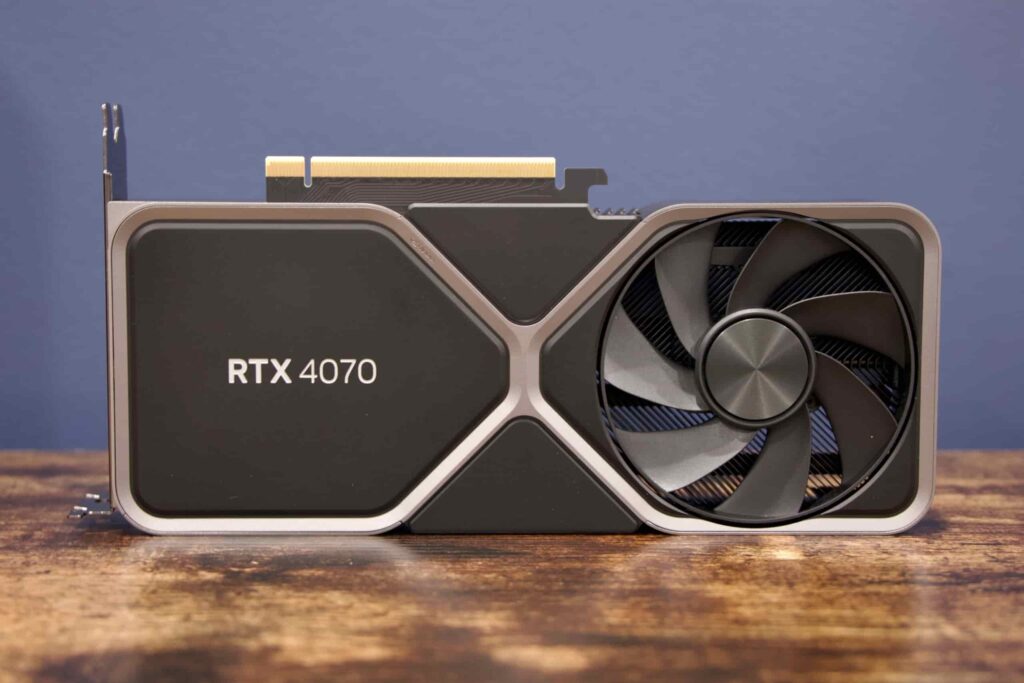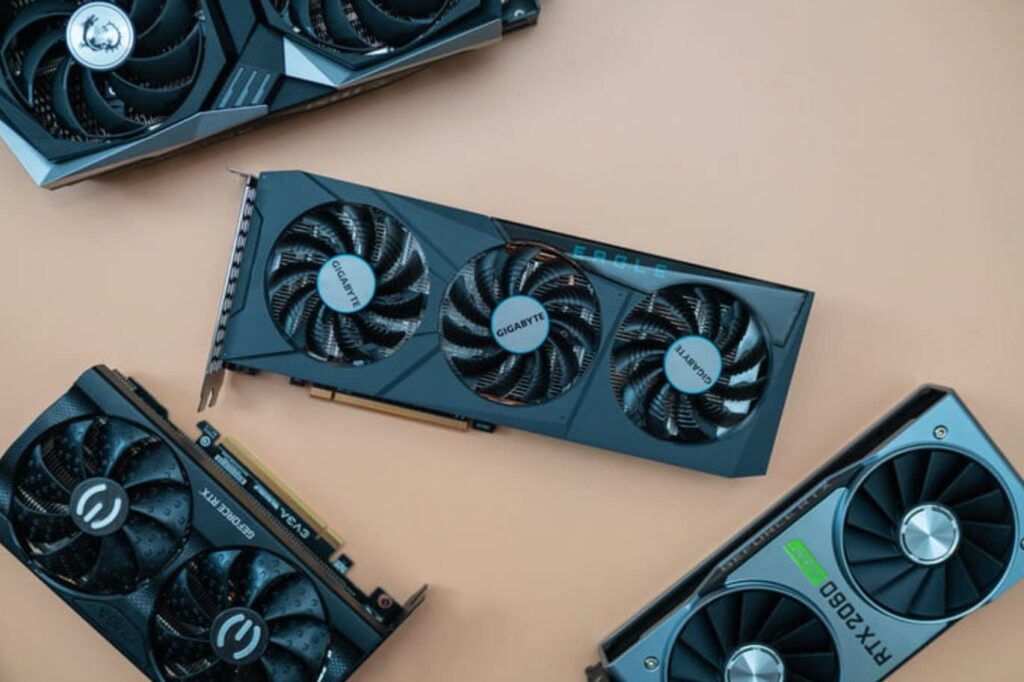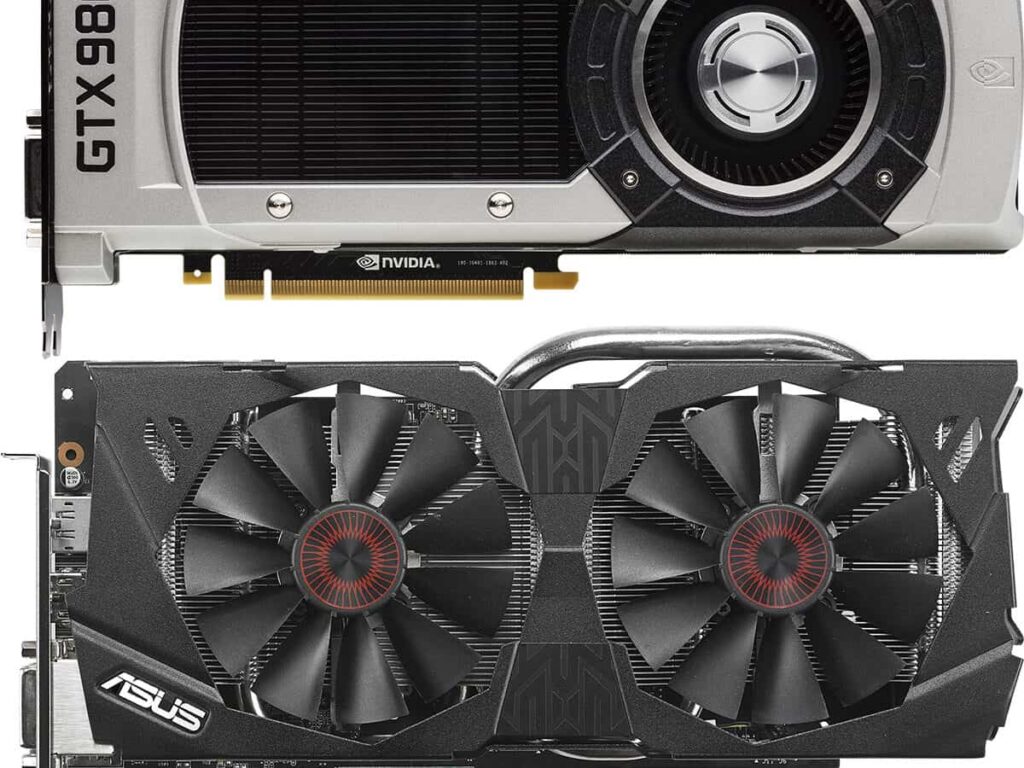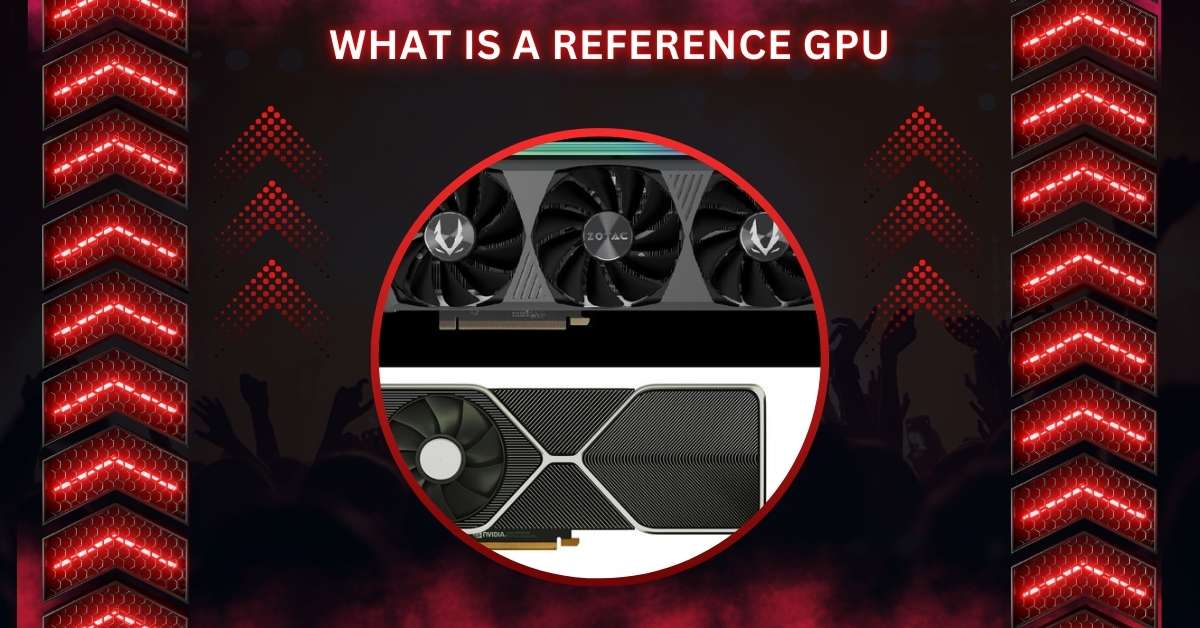A reference GPU is essentially the original graphics card design created by GPU manufacturers like NVIDIA or AMD.
A reference GPU is a graphics card model designed and manufactured directly by companies like NVIDIA or AMD. It uses the standard design, cooling, and performance setup initially developed by the GPU maker.
In this article, we’ll explore what makes reference GPUs unique and whether they’re the right choice for your needs.
Characteristics of a Reference GPU
The following characteristics typically define reference GPUs:
- Standard Design: The GPU follows a standard form factor and design set by the manufacturer, like NVIDIA’s Founder’s Edition.
- Baseline Clock Speeds: Reference GPUs maintain the manufacturer’s specified clock speeds, offering predictable performance without factory overclocking.
- Stock Cooling Solution: These cards typically come with blower-style cooling solutions designed to push hot air out of the PC case, which is effective but limits overclocking potential.
- PCB Design: The Printed Circuit Board (PCB) layout is standard and supports compatibility with aftermarket cooling solutions and water blocks.
- First Release: Reference GPUs are often the first models released during a new GPU generation, giving enthusiasts a first look at the latest technology.
Why Do Reference GPUs Exist?

The primary purpose of a reference GPU is to establish a standard design and performance baseline for third-party manufacturers and consumers. Here’s why reference GPUs are significant:
- Standardization: Reference GPUs create a standardized base for custom models. Manufacturers like MSI or ASUS build upon this design, adding custom coolers, higher clock speeds, and unique features.
- Compatibility: With a uniform design, reference GPUs are compatible with a wide range of motherboards, PC cases, and cooling systems, which helps ensure they can fit into different setups without compatibility issues.
- Showcase for New Technology: Reference models also act as a platform for companies to showcase the latest advancements in GPU technology. For example, NVIDIA’s Founder’s Edition cards demonstrate the full potential of the new architecture.
- Consistency in Reviews: Reviewers and enthusiasts use reference GPUs to benchmark and evaluate the new architecture, providing early feedback to the community. This consistency makes it easier to assess the performance of different cards based on a common baseline.
Advantages of Reference GPUs
Opting for a reference GPU comes with several advantages, making them a viable choice for specific users:
- Predictable Performance: Reference GPUs provide consistent performance across various models. A reference GPU is a solid choice if you’re looking for a card with reliable, standard clock speeds.
- Early Availability: These cards are typically available at launch, whereas third-party manufacturers may take longer to release custom cards.
- Better Compatibility: Reference GPUs are designed to fit in most PC builds. Their stock cooler is typically smaller and more compact, making it easier to fit in smaller cases.
- Cooling Design: Reference GPUs use blower-style cooling, which exhausts heat directly from the case. This can be advantageous in smaller builds where internal case airflow might be limited.
- Lower Noise Levels: Although not silent, reference GPUs tend to run quieter due to their specific cooling setup.
Disadvantages of Reference GPUs
Despite their benefits, reference GPUs also have several drawbacks, particularly for performance enthusiasts:
- Limited Overclocking: Due to their stock design and cooling, reference GPUs often have less overclocking potential than custom cards from third-party manufacturers.
- Basic Cooling Solution: The stock blower-style coolers are effective at expelling heat but less efficient than the dual- or triple-fan cooling systems found on custom cards. This can result in higher operating temperatures, which limits overclocking potential.
- Premium Price for Founder’s Edition: In the case of NVIDIA’s Founder’s Edition, these reference cards are often priced higher than non-reference versions with better cooling and more features.
- Lower Performance per Dollar: Compared to custom models, reference GPUs can seem underwhelming in terms of performance relative to cost. Custom models often offer better value regarding cooling efficiency and overclocking potential.
Also Read: Is Minecraft CPU Or GPU Intensive? – A Detailed Analysis!
Founder’s Edition vs. Reference GPUs

For NVIDIA, the term Founder’s Edition is often synonymous with reference GPUs, though these models sometimes come with slight tweaks, such as premium cooling solutions or exclusive features. Founder’s Edition cards represent NVIDIA’s flagship models, often serving as the face of new GPU launches.
In contrast, AMD’s reference GPUs follow a more traditional stock design without additional branding. While Founder’s Edition GPUs can sometimes include unique features, they are primarily a reference design, maintaining standard specifications.
Who Should Buy a Reference GPU?
A reference GPU is a solid option if:
- You Want Early Access: If you want to be the first to experience the latest GPU technology, reference cards are typically the first to launch.
- You Prefer Standardization: If you value reliability and prefer stock performance without worrying about third-party variations, reference cards provide a stable and predictable experience.
- You Have a Small PC Build: With their compact cooling systems, Reference GPUs often fit better in smaller PC cases than bulkier custom cards.
- You Plan to Use Aftermarket Cooling: If you intend to replace the stock cooler with an aftermarket solution, reference cards are ideal due to their standard PCB design, which is compatible with most water blocks and aftermarket coolers.
Who Should Avoid a Reference GPU?
If you’re looking for maximum performance, a custom card from a third-party manufacturer may be a better fit. Here’s why:
- You Need Better Cooling: Custom GPUs often have advanced cooling systems, including multiple fans or liquid cooling. These setups allow for higher clock speeds and better thermal performance, which is ideal for overclocking.
- You Want More Performance: Many custom cards are factory-overclocked, offering better performance than reference models. If you’re chasing higher frame rates in demanding games, non-reference cards might provide better value for your investment.
- You Want More Features: Third-party manufacturers often add extra features to their custom cards, such as RGB lighting, enhanced power delivery, and better build materials.
Reference card example
A reference card is the standard version of a graphics card designed by the original manufacturer, like NVIDIA’s Founder’s Edition or AMD’s reference models. These cards feature a basic design, cooling, and performance, serving as a baseline for custom versions.
Are reference cards better?
Reference cards are good for standard performance and early access, but custom cards often offer better cooling, higher performance, and additional features.
Choosing between them depends on whether you prioritize simplicity or want enhanced gaming and overclocking capabilities.
Must Read: Are GPU Fans Intake Or Exhaust? – Optimize Your PC Airflow!
Are AMD reference cards good?
Yes, AMD reference cards provide reliable performance and a standard cooling solution. While they may not offer the same advanced cooling or overclocking potential as custom models, they are a solid choice for those who prefer stock specifications and early access.
Nvidia reference card vs non-reference

NVIDIA reference cards offer standard performance and cooling, while third-party manufacturers’ non-reference (custom) cards provide enhanced cooling systems, factory overclocking, and additional features. Non-reference cards are usually better for gaming enthusiasts who want more power and cooling efficiency.
What does a reference model mean?
A reference model refers to the original version of a graphics card created by the manufacturer, like NVIDIA or AMD. It establishes a standard design and performance baseline, which third-party companies use to develop custom versions with unique improvements.
What are Reference Cards and Non-Reference Cards?
Reference cards are the standard models designed by the GPU manufacturer, while non-reference cards are custom versions made by other companies.
Non-reference cards often include better cooling, higher clock speeds, and additional features tailored to gaming enthusiasts.
Must Read: Why Are OC GPU Cheaper – Everything You Need To Know!
Which should you buy, reference or custom graphics cards?
Buy a reference card if you want reliable performance and early access to new technology. Go for a custom card if you need better cooling and overclocking potential. Your choice depends on your performance needs and budget.
What exactly is a “Reference Card”?
A reference card is the first version of a GPU designed by the original manufacturer, like NVIDIA or AMD. It has standard features and performance, serving as a template for third-party companies to create enhanced versions with custom designs.
Reference vs. custom graphics cards: Which should you buy?
Reference cards are great for standard performance, while custom graphics cards offer better cooling, overclocking, and extra features. Choose a reference card if you need simplicity or a custom card for better gaming performance and cooling.
FAQs
1. What does reference mean GPU?
A reference GPU is the original design by manufacturers like NVIDIA or AMD, used as a performance and design baseline.
2. What is a reference card used for?
Reference cards set the standard design and performance for third-party manufacturers, ensuring compatibility and consistent functionality.
3. What does GPU stand for in iPhone?
GPU stands for Graphics Processing Unit, which is responsible for handling visual tasks like gaming and rendering on an iPhone.
4. What is GPU in Apple laptop?
In Apple laptops, the GPU (Graphics Processing Unit) manages graphics performance for video editing, gaming, and visual rendering tasks.
5. Are reference models GPUs good?
Yes, reference GPUs offer reliable baseline performance but lack advanced cooling or features found in custom models by third parties.
6. Is RTX 3080 a GPU or CPU?
The RTX 3080 is a high-end GPU (Graphics Processing Unit) used primarily for gaming and intensive graphics tasks.
7. Does it matter which GPU I get?
Yes, different GPUs vary in performance, cooling, and price. Choosing the right one depends on your gaming or workload needs.
8. What is reference mode in Nvidia?
In Nvidia, reference mode refers to the standard design and performance of the GPU set by the manufacturer without modifications.
9. What is meant by reference frame in computer graphics?
In computer graphics, a reference frame refers to a fixed coordinate system used to define the position and orientation of objects.
10. How to tell if a graphics card is reference design?
You can identify a reference design by checking the model directly from the manufacturer, like NVIDIA’s Founder’s Edition series.
Conclusion
In conclusion, reference GPUs offer a standard design and reliable performance, making them ideal for early adopters or users with compact builds. However, custom cards provide better cooling, overclocking potential, and extra features, making them a better choice for gaming enthusiasts.
